Vortex generator of the light-duTY vehicle
Added on 2021-06-22
48 Pages14371 Words427 Views
INVESTIGATION FOR THE EFFECTS OF THE VORTEXGENERATOR OF THE LIGHT-DUTY VEHICLE

Abstract Here a model has to be created which is totally depends on the properties of theaerodynamics. The main aim of this report is to creating the model of the automotive vehiclein which the control over surface is needs to accomplished as well as the turbulence energyof the vehicle as well as the drag force is needs to be determined. A vortex generator is acontrol mechanism for aerodynamic drag that is present on the car's high specific surfacearea. In airflow devices such as airlines and for automobiles, they are typically used. Thevortex generator generates a vortex as the airfoil moves relative to air, which slows theisolation and aero deification of the stream and improves the efficiency of the wings as flaps,elevators and rotors by replacing the slowly flowing flow separation in connection with thesurfaces. The main purpose of Vortex generators is to slow the flow of removingcontaminants on the moving object.2
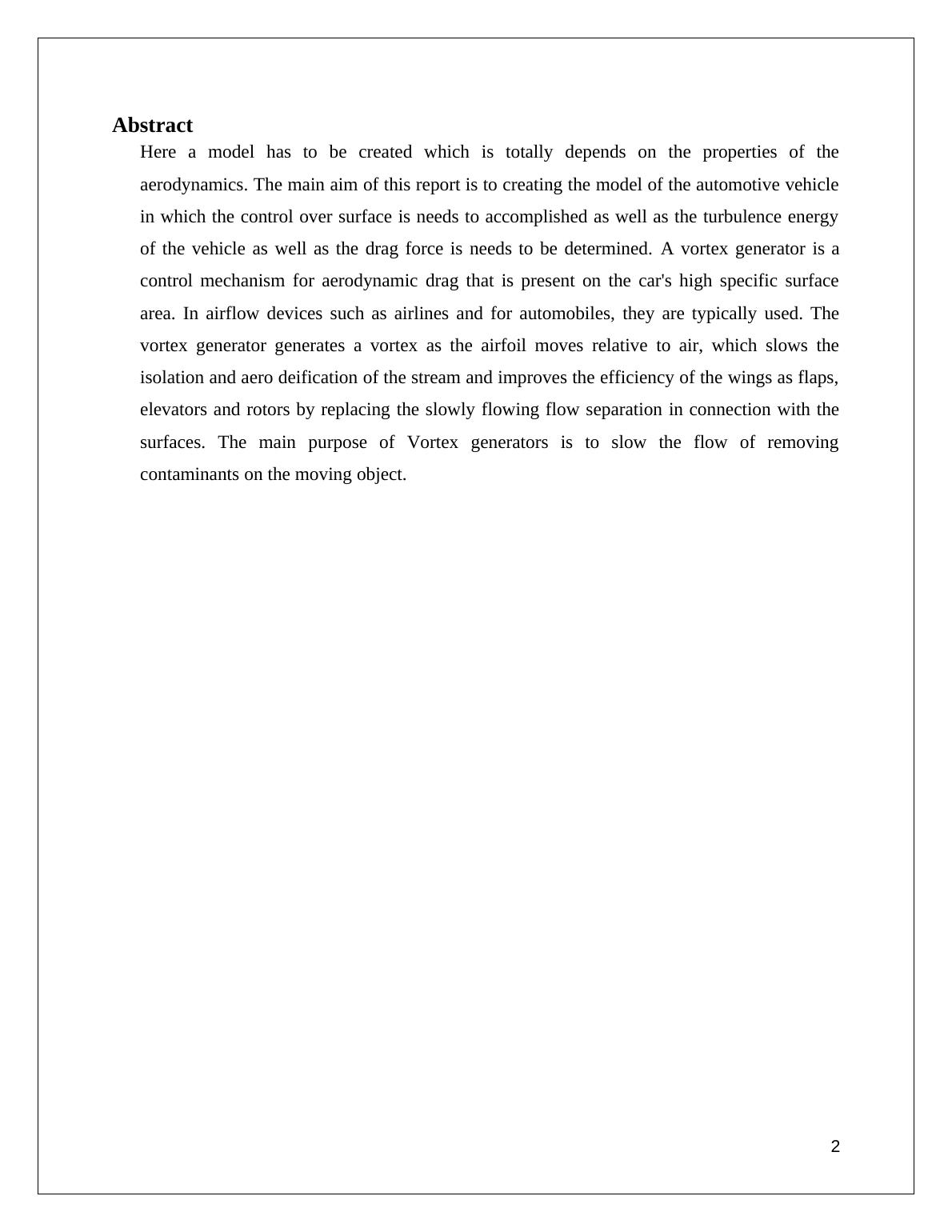
Table of Contents1.0 Introduction................................................................................................................................41.1 Introduction............................................................................................................................41.2 Background............................................................................................................................41.3 Research Aim.........................................................................................................................51.4 Research objectives................................................................................................................51.5 Research Questions................................................................................................................51.6 Research Rationale.................................................................................................................61.7 Research significance.............................................................................................................61.8 Research Framework..............................................................................................................7Figure 1: Conceptual framework..............................................................................................71.9 Conclusion.............................................................................................................................72.0 Literature Review......................................................................................................................72.1 Introduction............................................................................................................................72.2 Empirical Study......................................................................................................................9Figure 2: The properties and mechanism of aerodynamic.....................................................11Drag............................................................................................................................................122.3 Models and Theories............................................................................................................13Bernoulli’s principle..................................................................................................................14Coanda effect.............................................................................................................................142.6 Literature Gap......................................................................................................................152.7 Conclusion...........................................................................................................................153.0 Methodology............................................................................................................................173.1 Introduction..........................................................................................................................173
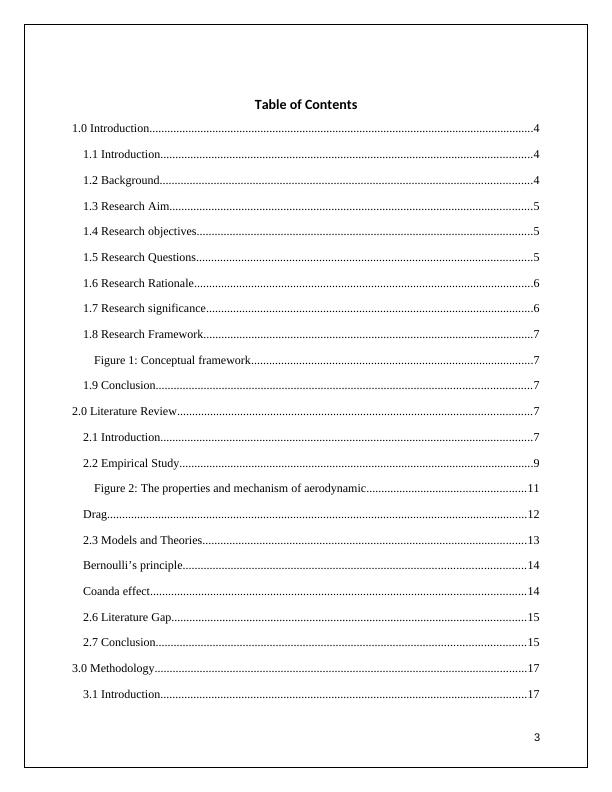
3.2 Method Outline....................................................................................................................173.3 Research Onion....................................................................................................................18Figure 3: Research onion........................................................................................................183.4 Research Approach..............................................................................................................183.5 Research Design...................................................................................................................193.6 Research Methods................................................................................................................193.7 Research Philosophy............................................................................................................193.7 Research Strategy.................................................................................................................203.8 Method of Data collection....................................................................................................203.9 Research Ethics....................................................................................................................203.10 Research Limitation...........................................................................................................213.11 Conclusion.........................................................................................................................214.0 Findings and Analysis..............................................................................................................214.1 Introduction..........................................................................................................................214.2 Analysis................................................................................................................................22Figure 4: The vortex generator in 3D view with dimension..................................................22Figure 5: Stapes for installing the vortex generator...............................................................23Figure 6: "Reynolds number (Re) Vs. Coefficient of drag graph without vortex generator."................................................................................................................................................25Figure 7: "Reynolds number (Re) Vs. Coefficient of drag (Cd) graph with a vortexgenerator."..............................................................................................................................26Figure 8: “Comparison of Cd between with vortex and without vortex Genera-tor”............264.2.1 Secondary Analysis...........................................................................................................27Figure 9: Airflow over the car................................................................................................28Figure 10: Velocity profile at the roof of a car without VG...................................................28Figure 11: Flow around Vortex generator.............................................................................294
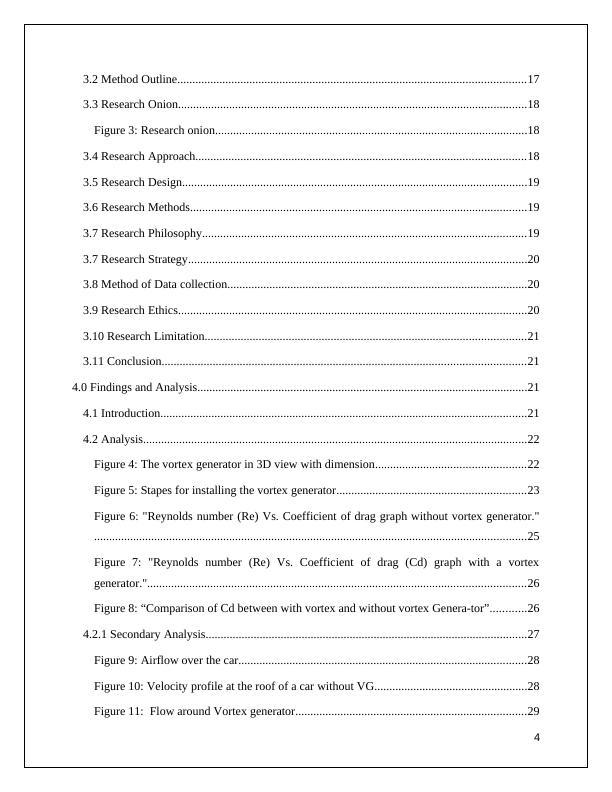
4.3 Discussion of Findings.........................................................................................................29Figure 12: The created model under the Automotive aerodynamics.....................................30Figure 13: The act of force in the vehicle..............................................................................314.3.1 Secondary Analysis...........................................................................................................31Figure 14: The RMS value of the vehicle..............................................................................32Figure 15: Turbulence factor of the vehicle...........................................................................33Figure 16: The final created model of the aerodynamics.......................................................344.4 Conclusion...........................................................................................................................345.0 Conclusion...............................................................................................................................345.1 Introduction..........................................................................................................................345.2 Linking with Objectives.......................................................................................................355.3 Recommendations................................................................................................................365.4 Conclusions..........................................................................................................................36Reference List................................................................................................................................38Appendix........................................................................................................................................445
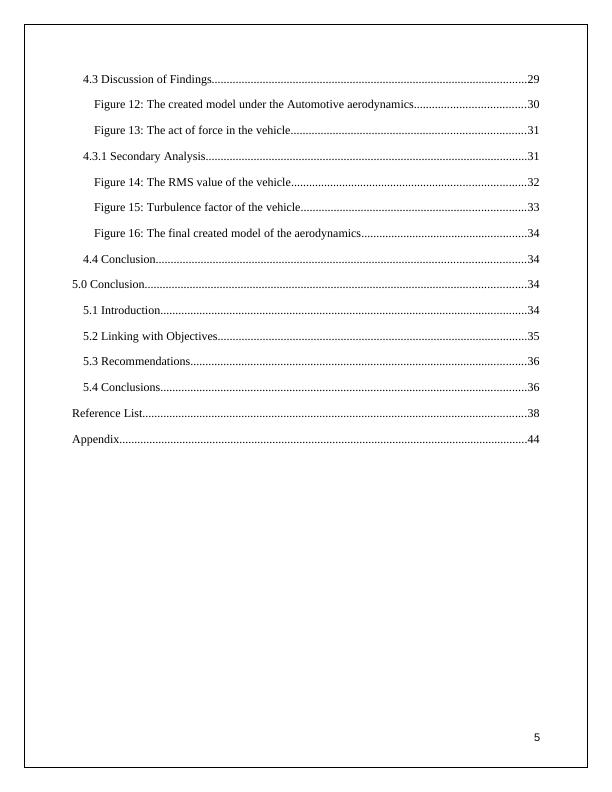
Figure 1: Conceptual framework...................................................................................................10Figure 2: The properties and mechanism of aerodynamic.............................................................14Figure 3: Research onion...............................................................................................................21Figure 4: The vortex generator in 3D view with dimension..........................................................25Figure 5: Stapes for installing the vortex generator.......................................................................26Figure 6: "Reynolds number (Re) Vs. Coefficient of drag graph without vortex generator.".......28Figure 7: "Reynolds number (Re) Vs. Coefficient of drag (Cd) graph with a vortex generator.".29Figure 8: “Comparison of Cd between with vortex and without vortex Genera-tor”...................29Figure 9: Airflow over the car.......................................................................................................31Figure 10: Velocity profile at the roof of a car without VG..........................................................31Figure 11: Flow around Vortex generator....................................................................................32Figure 12: The created model under the Automotive aerodynamics.............................................33Figure 13: The act of force in the vehicle......................................................................................34Figure 14: The RMS value of the vehicle......................................................................................35Figure 15: Turbulence factor of the vehicle..................................................................................36Figure 16: The final created model of the aerodynamics..............................................................376
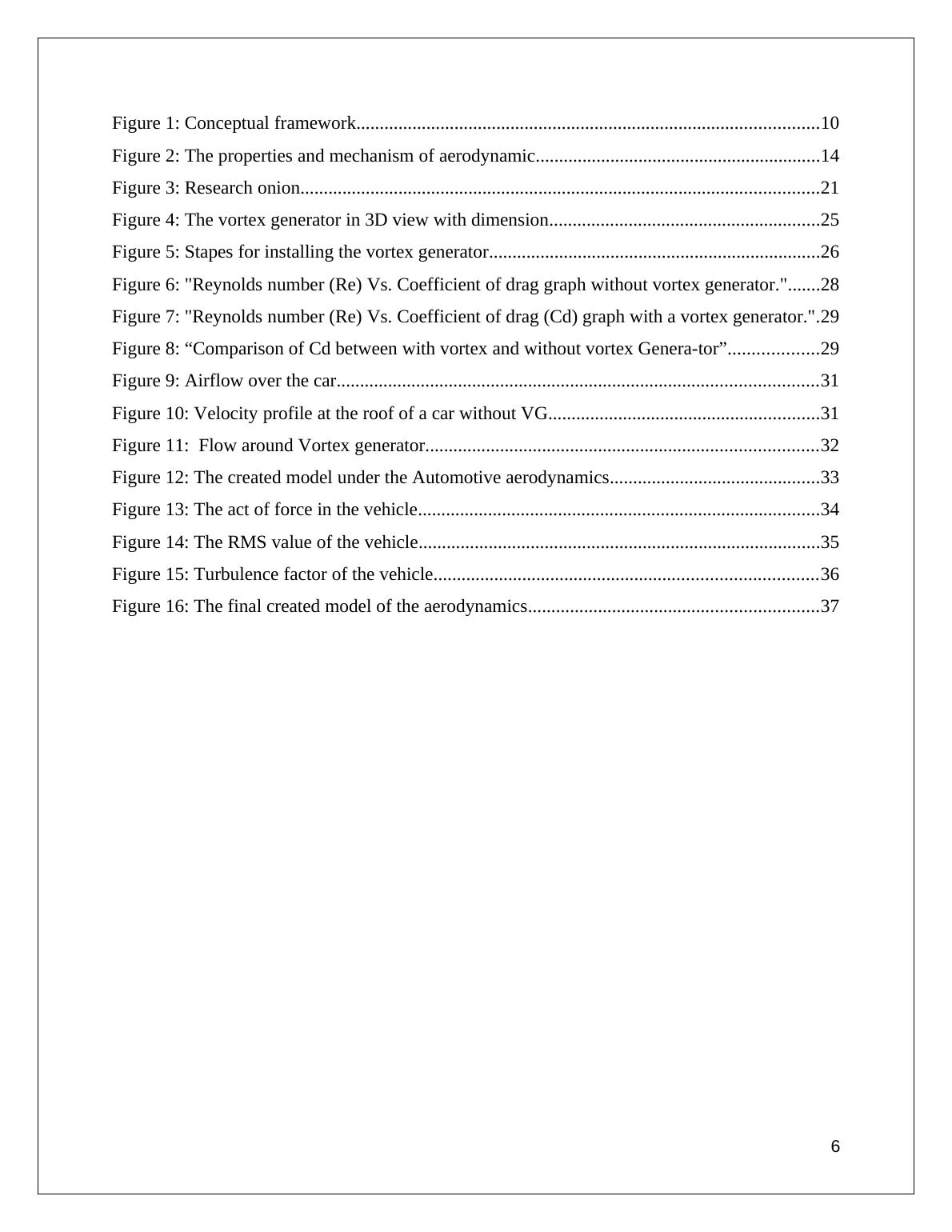
1.0 Introduction1.1 IntroductionVertex generator is nothing but a piece of metal which will reduce the air pressure in the vehicle.If the vertex generator is not there in the car, then the fuel economy will be reduced. To improvethe fuel economy, the vertex generator will be used. When the car is moving from one point toanother point, then there is always a huge air pressure in the car surroundings. Those air pressurewill lead to less fuel economy as it is clear that the car has to drag the air to move forward. Dueto that, there will be huge friction between the car body and the air. For that reason, the car willneed more power from the engine. If this happens, then the requirement of the fuel will be more.So that is a sign of an inefficient system. So, to reduce this problem, vertex generators are used.This metastatic thing will be attached to the outer surface of the car because the vertex generatorwill pass the air very smoothly. This means the pressure which will be created on the frontsurface of the car will be reduced when those are leaving from the backside of the car. 1.2 Background A very moving body will have the relative motion with another fluid body which will beassociated with the dragging force. This force will be created and stopping the body frommoving forward. So, the dragging force should be more powerful so that it will overcome thethrust which will be created. There are different types of drag forces which will skin friction, airpressure, induced, parasite, and wave. The aerodynamic surface is a vertex generator (Peng etal., 2019), which will be helping to pass the air from one position to another. This generator willconsist of a bump and a small vane which will create a small vortex. This will basically be foundin many devices. Then Maximum use of this generator is in the aircraft. The generator is actuallythe tip of the vortex which is energetic and the moving of the air, which will rapidly go from thesurface of the aircraft or a vehicle. The software work will be important to analyze theperformance of the vortex generator, which will be attached to the system. Here the simulationwill be done in the software called Solid works. 7
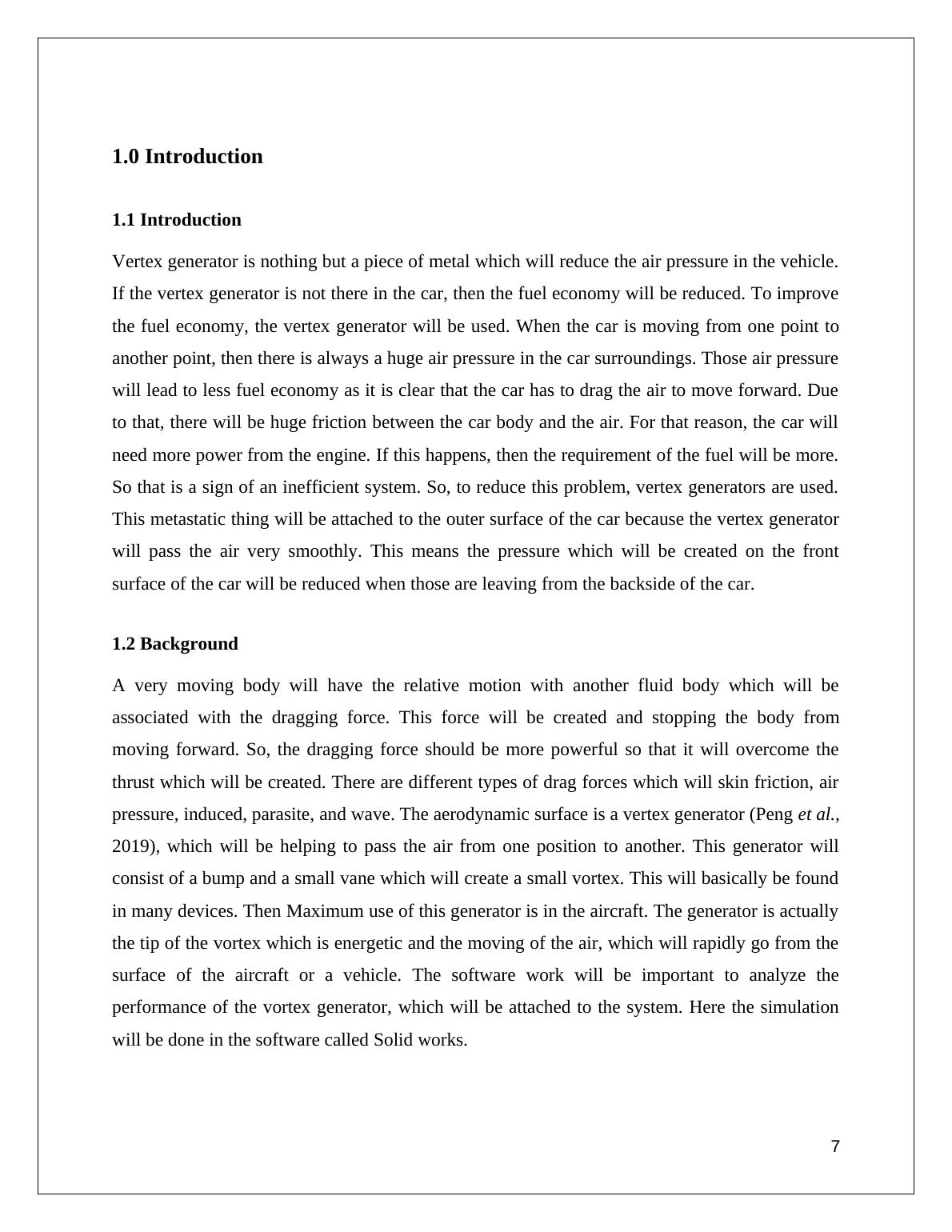
1.3 Research Aim The main aim of this project is to create a control surface which will control the surface of thevehicle or any aircraft. The reduction of the effectiveness of the "trailing edge control of thesurface". The boundary layer re-energizing will be the next form of technique. In the case of themathematical calculation, there is a parameter which is actually expressed as the drag coefficient.The value of the drag coefficient will be 0.2 to 0.5. The "bluff cubic objects are greater than 1.0,and that of the least bluff bullets is less than 0.1". The standard calculated value should be onthat range only (Li et al., 2019). This will only be possible when all the objective is cleared onthis project. The fuel cost will be more if the vertex generator will not be present in the system.To reduce the running cost of the car, the fuel economy should be perfect. So, the main objectiveis to reduce the air pressure, which will be dragging or stopping the car. Which ultimately endedup with the less efficient system? By using Solid works software, the whole thing will beperformed. This will be creating a different thing which can be analyzed practically. 1.4 Research objectives ●To determine the fuel economy of the car after attaching the vortex generator. ●To check the coefficient of drag in the aerodynamic surface. ●To determine the velocity of the air which is passing on all the sides of the car at variousspeeds of the car.●To understand the amount of air pressure which will be created on the surface of thevehicles.●To check all the standard parameters which will be related to the bluff object, coefficientof drag, the streamline shaped, etc. 1.5 Research Questions ●What should be the value of the coefficient of drag so that it will show the better fueleconomy?●What is the procedure to connect a vortex generator in the lightweight car so that the airwhich is passing through the area will produce less amount of friction?●In which velocity, what will be the standard value of Cd?8
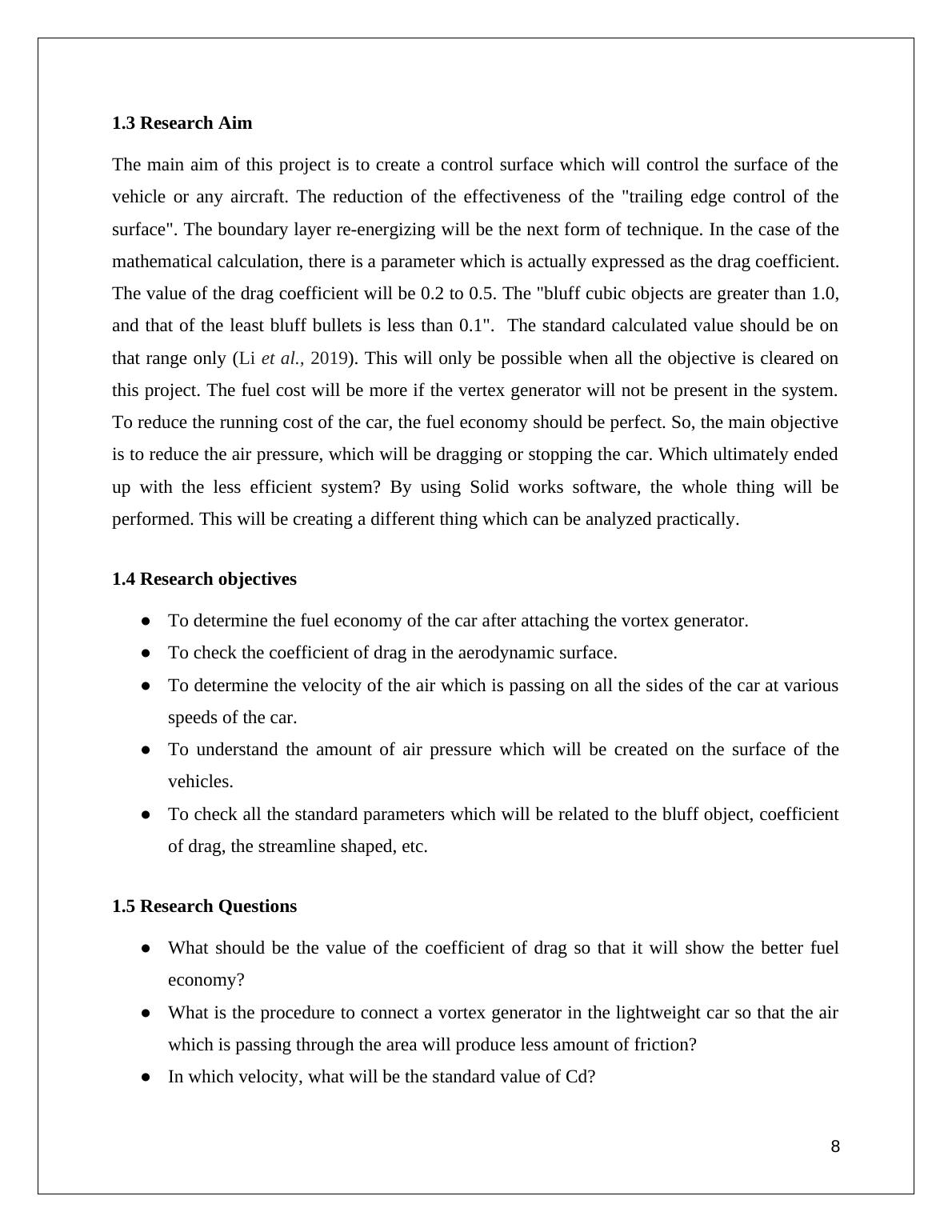
End of preview
Want to access all the pages? Upload your documents or become a member.
Related Documents
Aerodynamic Design and Development of Solar Powered Vehicles: A Literature Reviewlg...
|4
|1576
|395
What is Mechanical Engineering?lg...
|39
|3814
|15
